
To discuss:
How and why would the student nurse respond to this situation.
Case summary:
The nursing student Ms. S goes to the student health center and says she feels sick. The nursing student was very much in stress and fear of her clinical instructor and also with the tubes and machines in the critical care unit. Ms. S has a critical care rotation and she is very much afraid to tell her clinical instructor, tries to switch the clinical rotation but she failed. Due to immense stress, the nursing student feels migraine is coming over her.
Explanation of Solution
The nursing student must be truthful to her clinical instructor about her sickness and her fear of handling the machines and tubes in the critical care unit.
To discuss:
The adequacy of the skills for professional practice and what that is tell about the student nurse.
Case summary:
The nursing student Ms. S goes to the student health center and says she feels sick. The nursing student was very much in stress and fear of her clinical instructor and also with the tubes and machines in the critical care unit. Ms. S has a critical care rotation and she is very much afraid to tell her clinical instructor, tries to switch the clinical rotation but she failed. Due to immense stress, the nursing student feels migraine is coming over her.
Explanation of Solution
The nursing student does not have the capability to adapt or overcome the stress and fear. Due to her inefficient skill, she have fear to go in the critical care unit and also she feels very stressed to tell her fear to her clinical instructor.
To discuss:
Alternative ways to respond this situation.
Case summary:
The nursing student Ms. S goes to the student health center and says she feels sick. The nursing student was very much in stress and fear of her clinical instructor and also with the tubes and machines in the critical care unit. Ms. S has a critical care rotation and she is very much afraid to tell her clinical instructor, tries to switch the clinical rotation but she failed. Due to immense stress, the nursing student feels migraine is coming over her.
Explanation of Solution
The nursing student could have called in sick, if she is really not well and to calm herself down to think over her fear and stress. Taking a good rest might have change the mentality of the student nurse to overcome her fear.
To discuss:
The knowledge, skills, and attitudes do you need to develop to continuously improve quality and safety in situations experienced by the student nurse.
Case summary:
The nursing student Ms. S goes to the student health center and says she feels sick. The nursing student was very much in stress and fear of her clinical instructor and also with the tubes and machines in the critical care unit. Ms. S has a critical care rotation and she is very much afraid to tell her clinical instructor, tries to switch the clinical rotation but she failed. Due to immense stress, the nursing student feels migraine is coming over her.
Explanation of Solution
- The student should be equipped with knowledge before entering the clinical practice.
- The nurse should overcome her fears while handling the tubes and machines in the critical care unit.
- The nursing student should be truthful to her clinical instructor about her lack of confidence in handling the equipment’s in the critical care unit.
- The student nurse should gain confidence through her clinical instructor.
Want to see more full solutions like this?
Chapter 42 Solutions
FUND.OF NURSING BUNDLE >BI<
- Define obstetric emergencies and state and briefly explain any two (2) maternal, foetal, and obstetric complications that require immediate intervention.arrow_forwardExplain how mental health services can be effectively integrated into maternal and child health, visa-viz early childhood development.arrow_forwardEnumerate any four (4) potential complications during puerperium and highlight key measures to manage these complications.arrow_forward
- Describe the physiology of the first stage of labour.arrow_forward58. Consider the circuit shown below. Find 11, 12, and I3 when (a) the switch S is first closed, (b) after the currents have reached steady-state values, and (c) at the instant the switch is reopened (after being closed for a long time). 1 R1 ww 13 12 E S 0000 ww R2arrow_forwardRegularity- Rate- P waves- PRI- QRS- Interpretation- Normal sinus rhythm, sinus bradycardia, sinus tachycardia, sinus arrhythmia, sinus pause, sinus arrest, normal sinus with PACs, atrial fibrillation, atrial flutter, multifocal atrial tachycardia, wandering atrial pacemaker, supraventricular tachycardia, junctional rhythm, accelerated junctional rhythm, junctional tachycardia, premature junctional complex, premature ventricular complex, ventricular tachycardia, ventricular fibrillation, idioventricular rhythm, accelerated idioventricular rhythm, asystole, first-degree AV block, second-degree AV block type I (Wenckebach), second-degree AV block type II (Mobitz II), third-degree AV block (complete heart block), bigeminy, trigeminy, quadrigeminy, couplet,somatic tremor,AC interference,wandering baseline and etc (answer correctly using the 5 step method and only use those terms above)arrow_forward
- 76. 80. 81. 82. 83. 33arrow_forward69. 70. 71. 72. 73. 74.arrow_forward63. 64. 65. Rhythm: P wave: QRS Complex: Rate: PRI: Interpretation: Rhythm: P wave: QRS Complex: 66. 67. 68. Rhythm: P wave: QRS Complex: Rhythm: P wave: QRS Complex: Rate: PRI: Interpretation: Rate: PRI: Interpretation: Rate: PRI: Interpretation:arrow_forward
- 59. 57. 60. 62. 55. سلسلہ ་་་་arrow_forward• Define the first stage of labour. • Describe the physiology of the first stage of labour. • Enumerate any four (4) potential complications during puerperium and highlight key measures to manage these complications.arrow_forward• Define obstetric emergencies and state and briefly explain any two (2) maternal, foetal, and obstetric complications that require immediate intervention. • Explain how mental health services can be effectively integrated into maternal and child health, viz-a-viz early childhood development. • Enumerate any four (4) foetal malpresentations in pregnancy and briefly explain their implication in labour while also highlighting their causes and possible complications.arrow_forward
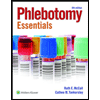 Phlebotomy EssentialsNursingISBN:9781451194524Author:Ruth McCall, Cathee M. Tankersley MT(ASCP)Publisher:JONES+BARTLETT PUBLISHERS, INC.
Phlebotomy EssentialsNursingISBN:9781451194524Author:Ruth McCall, Cathee M. Tankersley MT(ASCP)Publisher:JONES+BARTLETT PUBLISHERS, INC.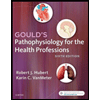 Gould's Pathophysiology for the Health Profession...NursingISBN:9780323414425Author:Robert J Hubert BSPublisher:Saunders
Gould's Pathophysiology for the Health Profession...NursingISBN:9780323414425Author:Robert J Hubert BSPublisher:Saunders Fundamentals Of NursingNursingISBN:9781496362179Author:Taylor, Carol (carol R.), LYNN, Pamela (pamela Barbara), Bartlett, Jennifer L.Publisher:Wolters Kluwer,
Fundamentals Of NursingNursingISBN:9781496362179Author:Taylor, Carol (carol R.), LYNN, Pamela (pamela Barbara), Bartlett, Jennifer L.Publisher:Wolters Kluwer,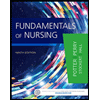 Fundamentals of Nursing, 9eNursingISBN:9780323327404Author:Patricia A. Potter RN MSN PhD FAAN, Anne Griffin Perry RN EdD FAAN, Patricia Stockert RN BSN MS PhD, Amy Hall RN BSN MS PhD CNEPublisher:Elsevier Science
Fundamentals of Nursing, 9eNursingISBN:9780323327404Author:Patricia A. Potter RN MSN PhD FAAN, Anne Griffin Perry RN EdD FAAN, Patricia Stockert RN BSN MS PhD, Amy Hall RN BSN MS PhD CNEPublisher:Elsevier Science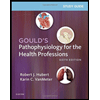 Study Guide for Gould's Pathophysiology for the H...NursingISBN:9780323414142Author:Hubert BS, Robert J; VanMeter PhD, Karin C.Publisher:Saunders
Study Guide for Gould's Pathophysiology for the H...NursingISBN:9780323414142Author:Hubert BS, Robert J; VanMeter PhD, Karin C.Publisher:Saunders Issues and Ethics in the Helping Professions (Min...NursingISBN:9781337406291Author:Gerald Corey, Marianne Schneider Corey, Cindy CoreyPublisher:Cengage Learning
Issues and Ethics in the Helping Professions (Min...NursingISBN:9781337406291Author:Gerald Corey, Marianne Schneider Corey, Cindy CoreyPublisher:Cengage Learning





